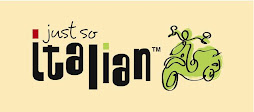
It was all a bit like a James Bond film set. A glistening white building surrounded by green, green lawns dotted with sunloungers and pine trees and oddly industrial sculptures: all overlooking an Indian-Ocean-white beach and a pigment-blue sea. Crickets sang from the lavender bushes. The reception staff were dressed in white too, loose white linen tunics and trousers: they moved slowly, as if performing Tai Chi, and smiled alot, inscrutably. The hall and sitting room were hung with modern art, some of it very good, and large French doors opened onto a shaded terrace of smooth pale stone. Our rooms were all cream carpets and billowing curtains, cane furniture and dark wood floors. I half expected Ursula Andress to pad across the lawns, dagger strapped to her still-dripping thigh.
But, like a film set, it all looked better from a slight distance. Upon closer inspection the whitewashed building showed signs of wear, the cream carpets bore stains of spillage and the staff chose not to venture out from behind their reception desk, leaving us to haul our own luggage to our rooms. The art, on the other hand, remained as good close up as it was from across the room.
We spent a happy couple of nights here though, lounging in the gardens and around the pool, sipping cold beer beneath a shady arbour. We took dinner one night, outside on the terrace. Earlier in the day, when we asked to see menus, one of the floaty-linen reception staff felt it necessary to point out that the portions were small: an odd way to entice diners. Perhaps she thought we were gluttons. We were served fish that was overcooked and vegetables that were tasteless, so in the event we were grateful for the small portions. And whilst we ate we knew, could even faintly hear, that down the road in the bay people were eating the freshest of seafood, in the most garlicky, fishy liquor or the crispest of batters, looking out over the inkiest of seas.
But you can't have everything. And taking coffee in Emilia's gardens, with the breeze from the Adriatic wafting over the cliff and the sculptures looming vaguely in the darkness, was very pleasant; until it was too chill, and we moved into the living room: in the dimmed light the paintings took on a different quality. The strange filmset feeling returned. I might have ordered a martini, but I worried it might be stirred rather than shaken...
Hotel Emilia, Collina di Portonovo 149/a, 60129 Ancona
Tel 071 801117





















